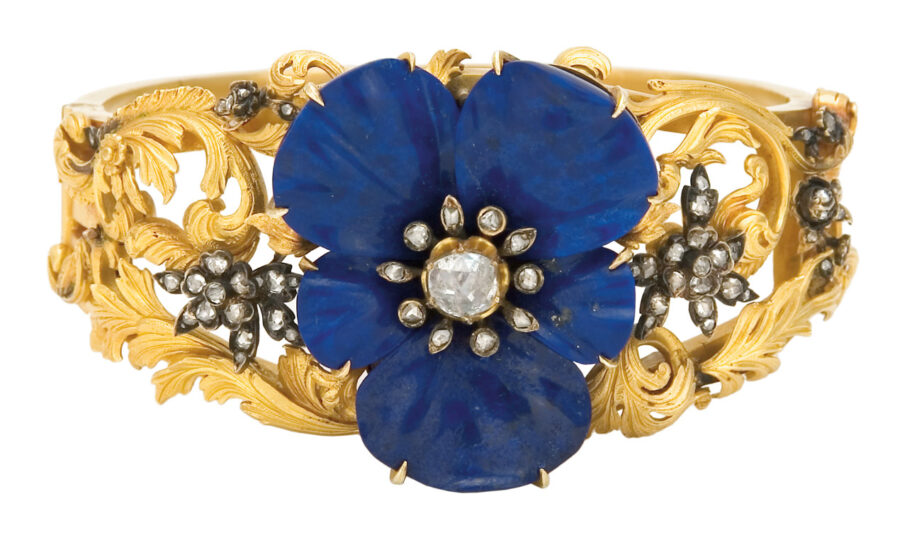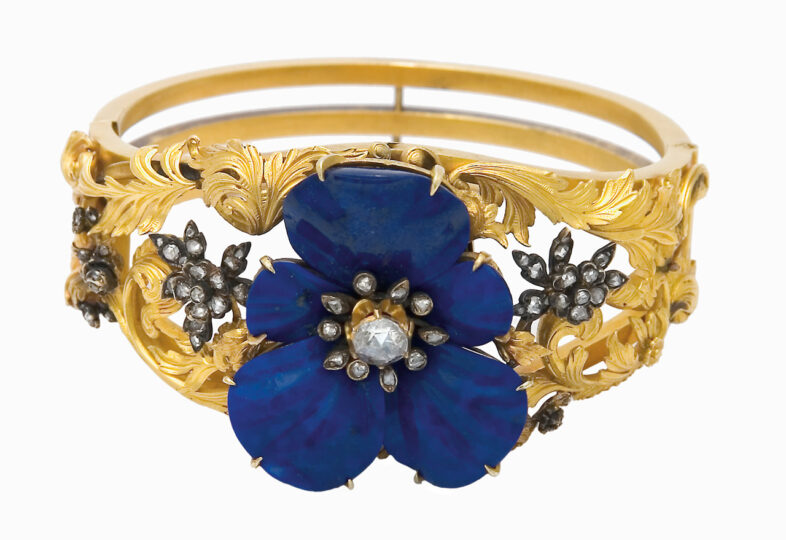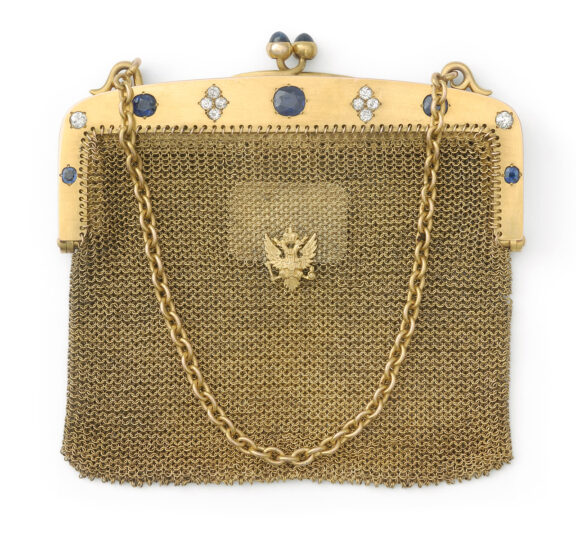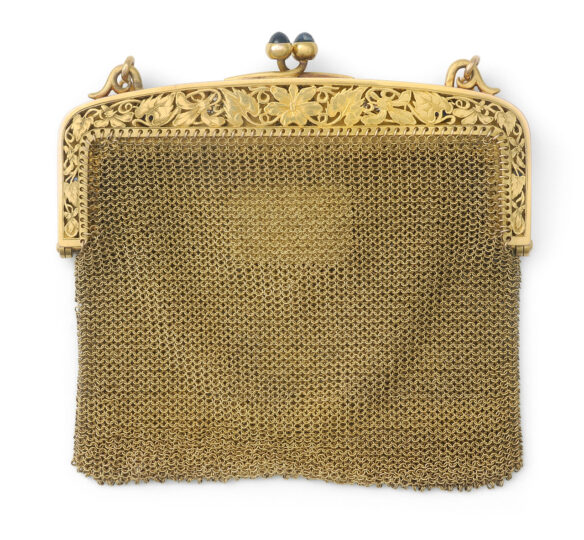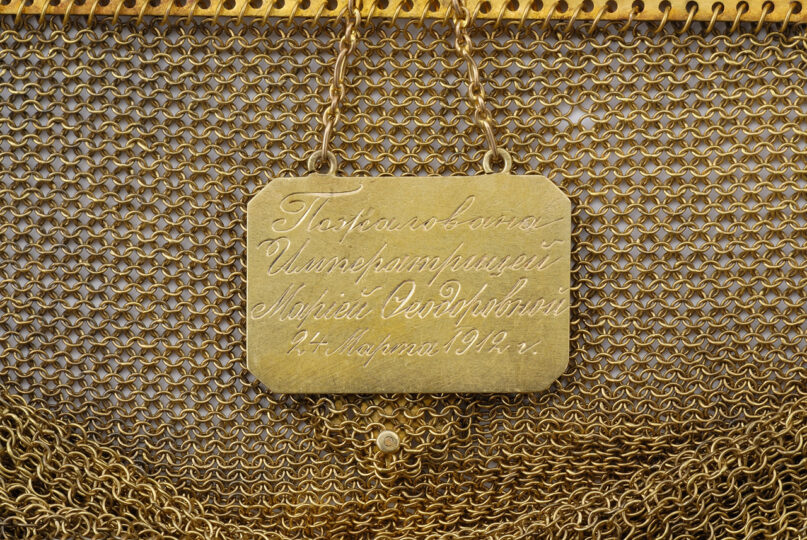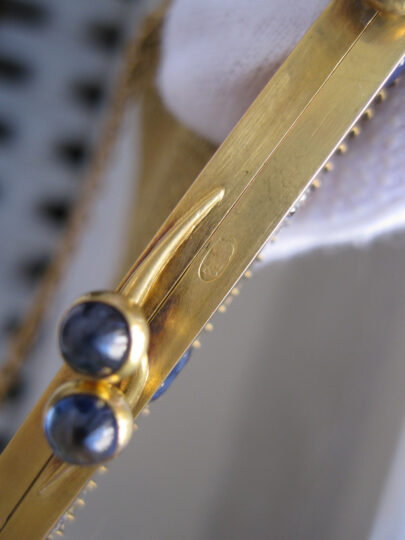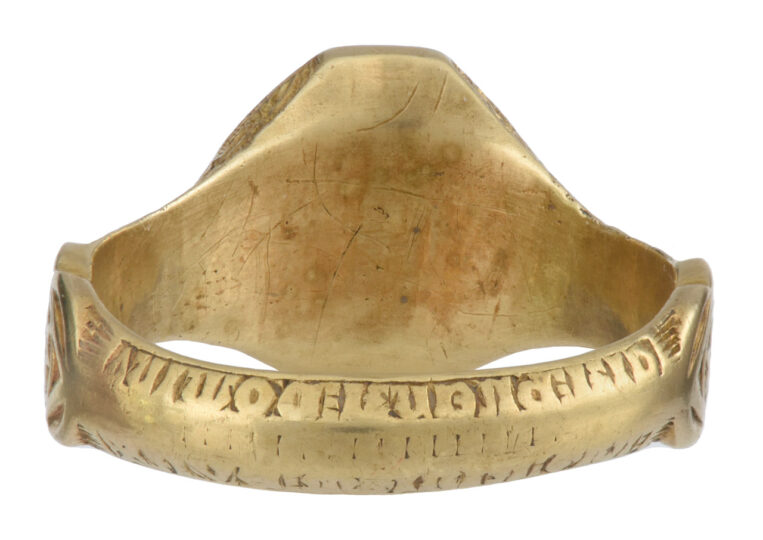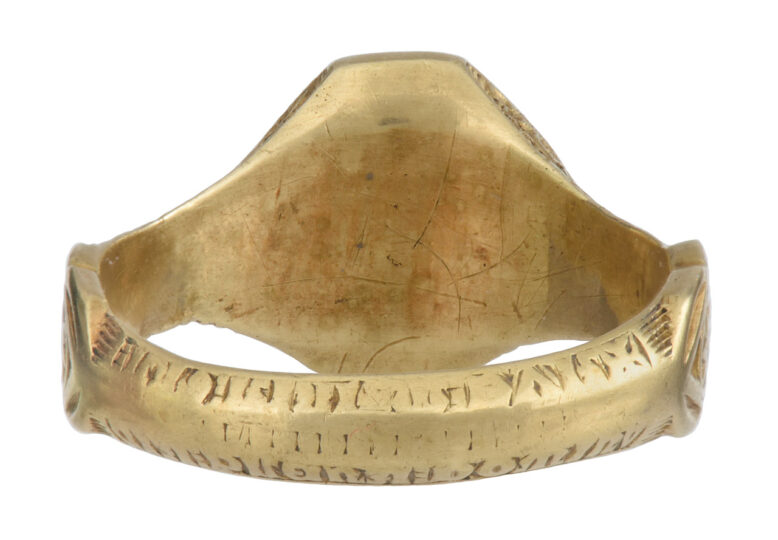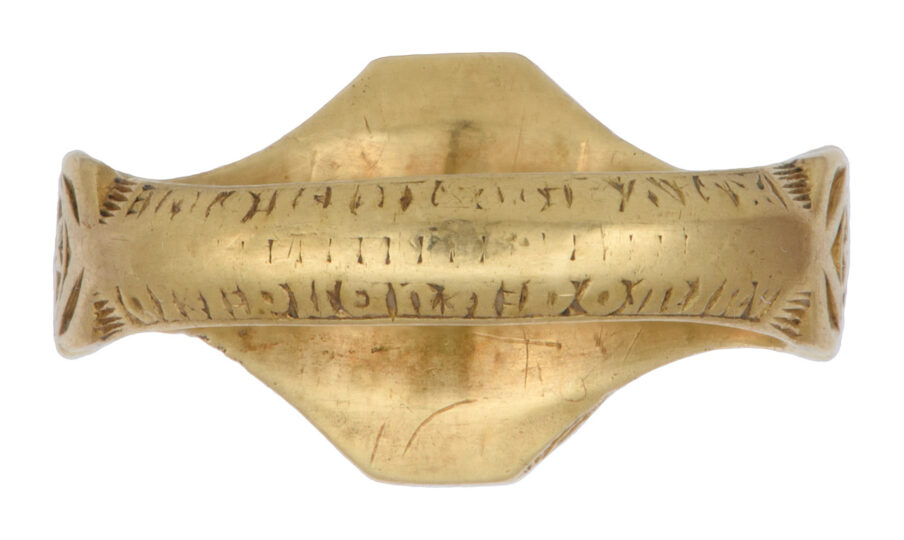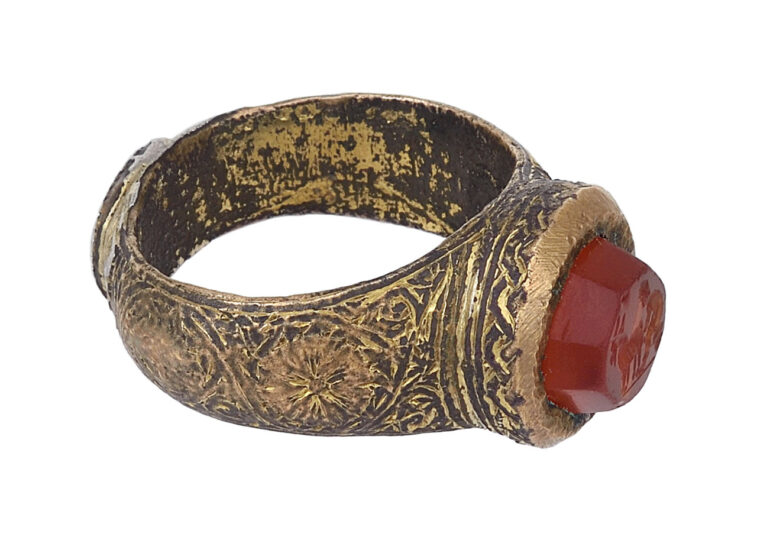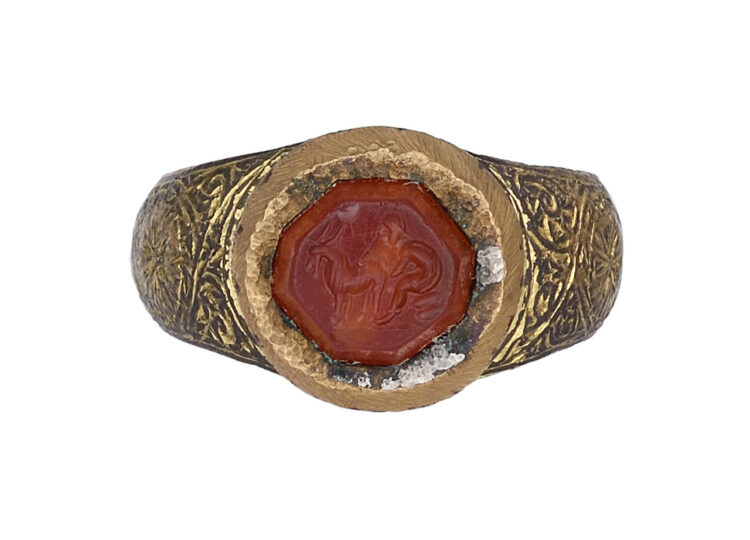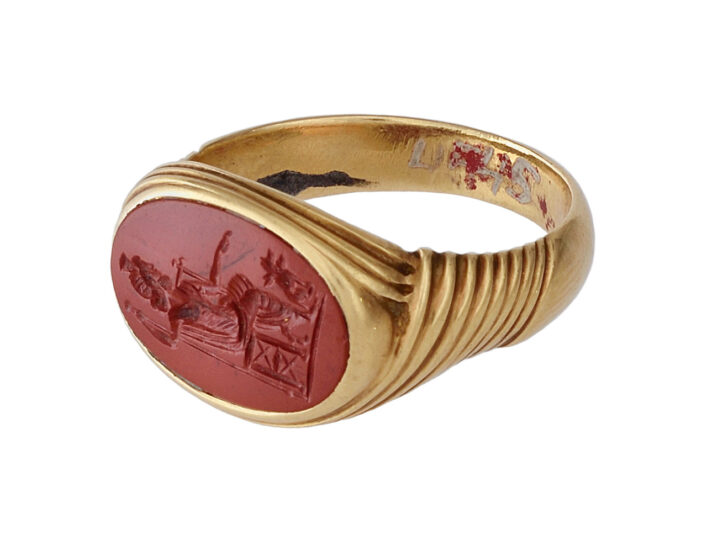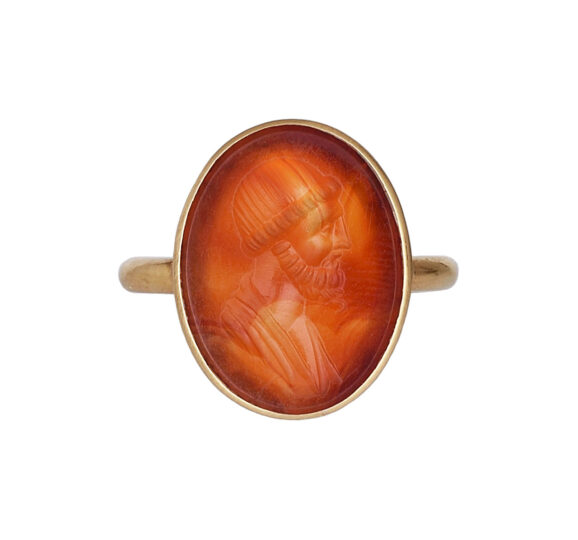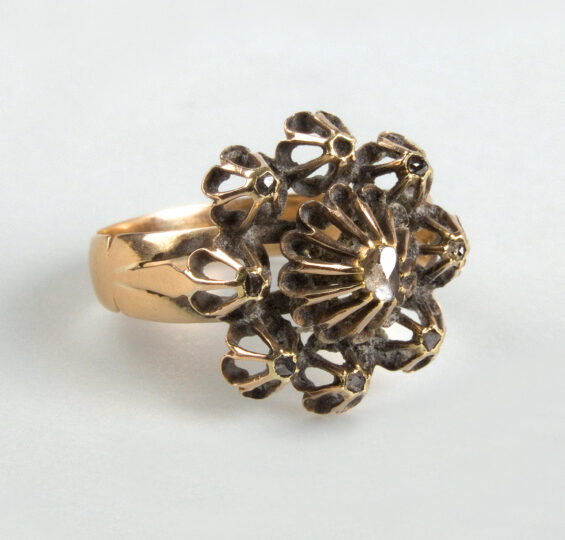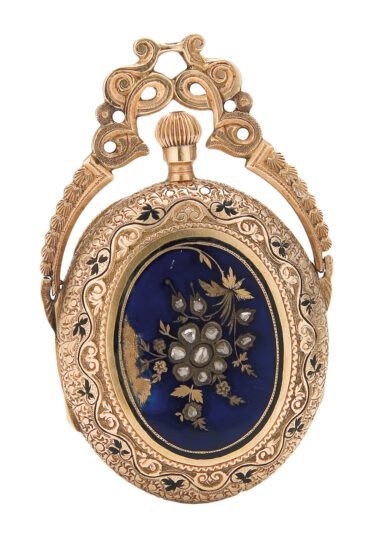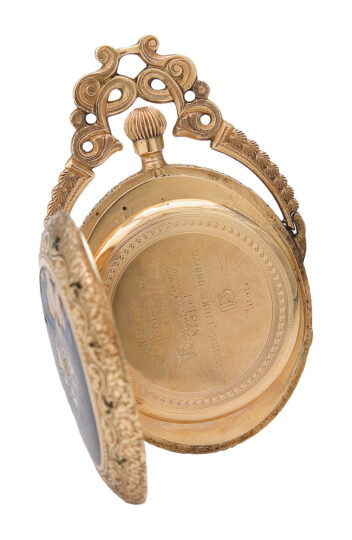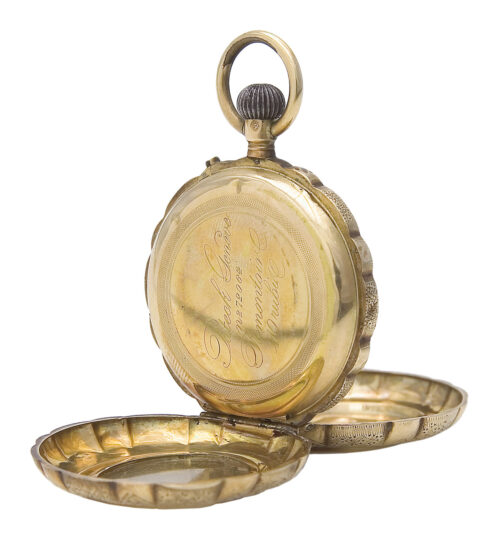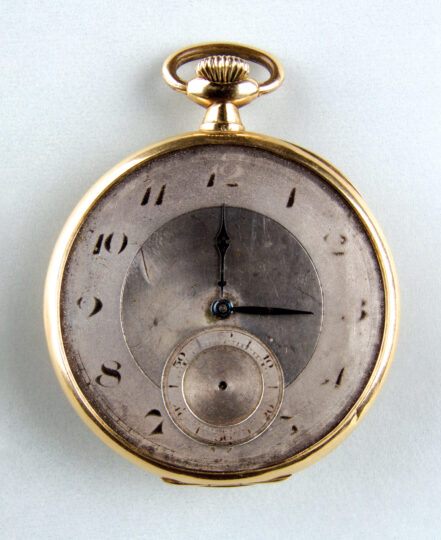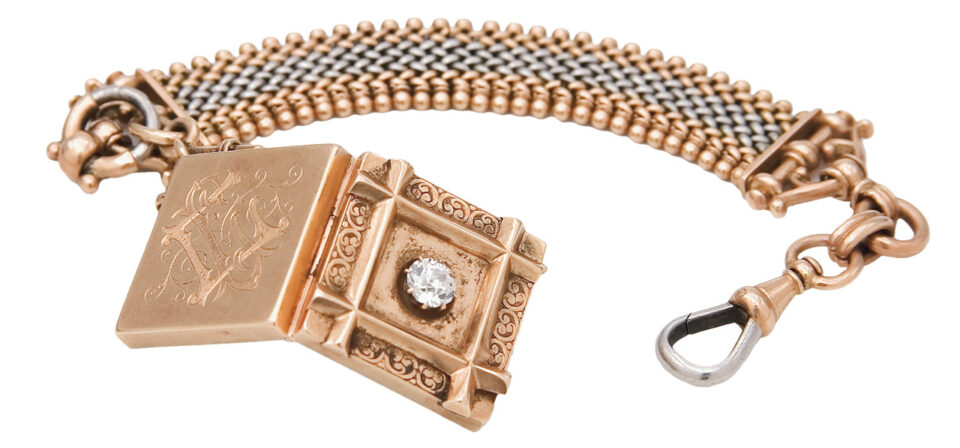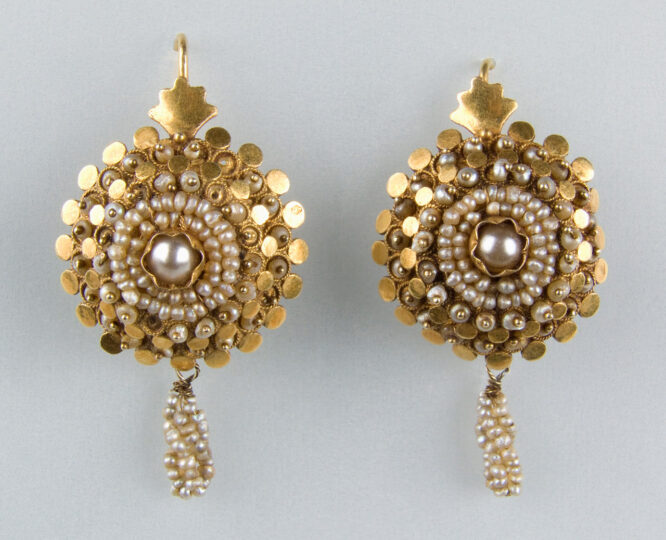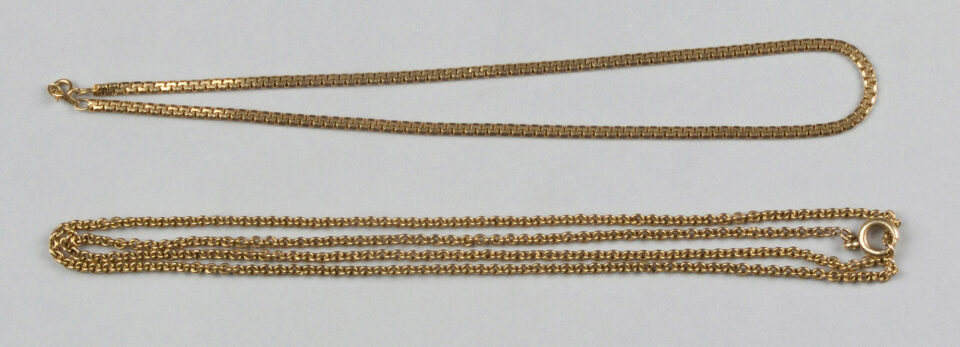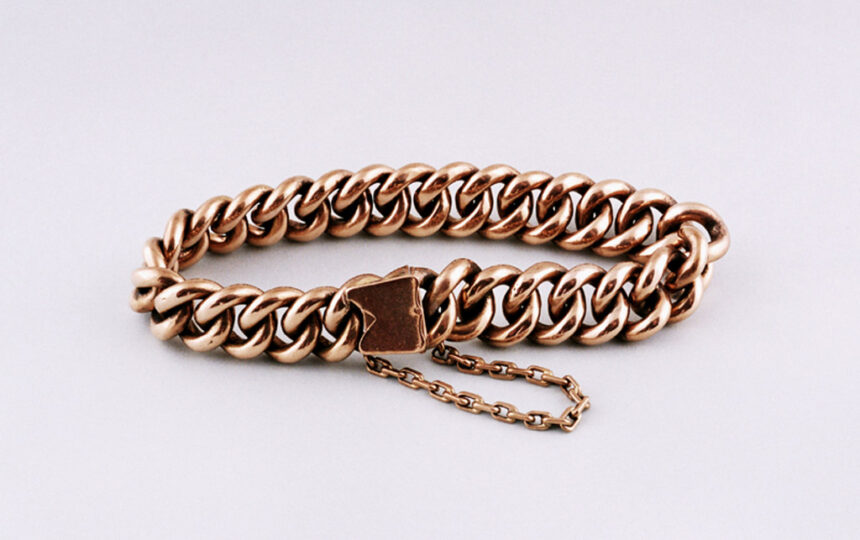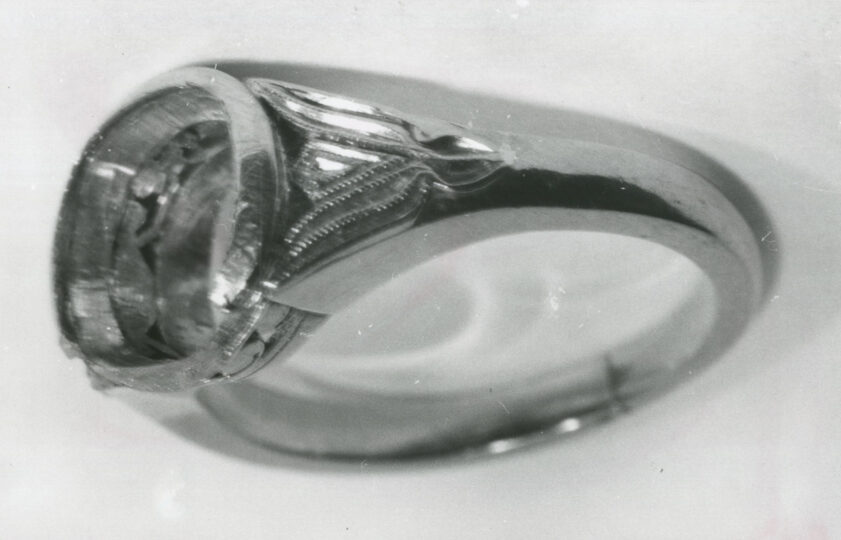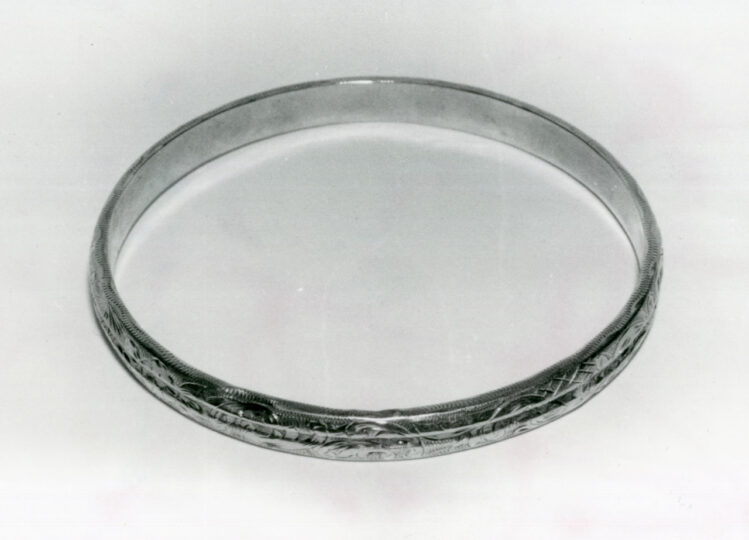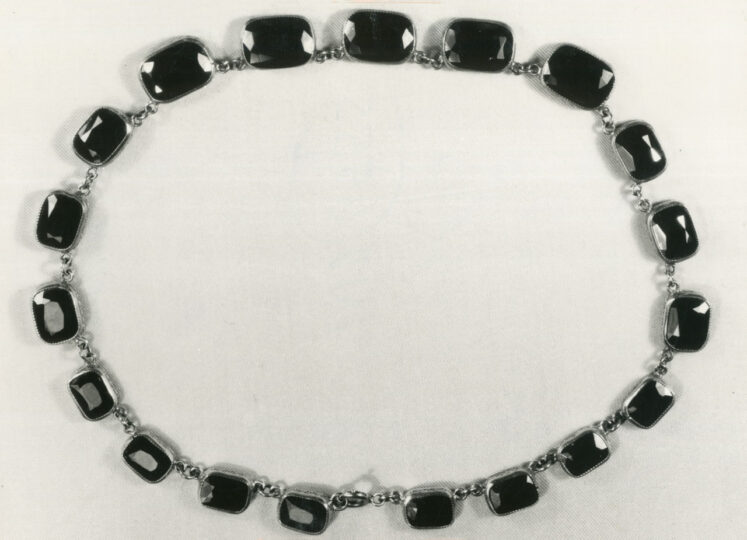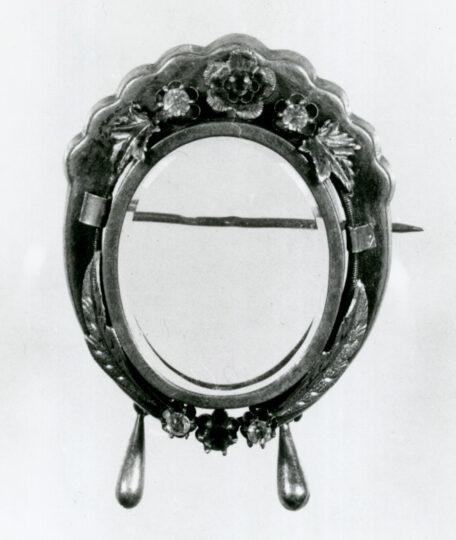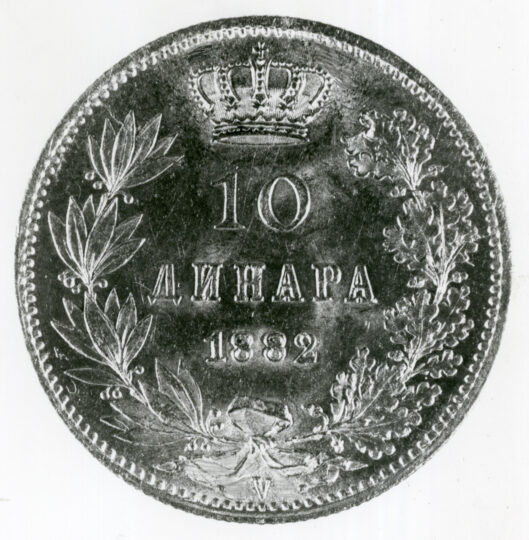List of objects stolen in 2019 from the Museum of Applied Art:
Bracelet
Munich, 1887; gold, lapis lazuli, diamonds; R 6 cm; MAA, accession no. 9767
The history of the exceptional golden bracelet, adorned with a lapis lazuli flower and diamond flowers is related to the Obrenović dynasty. In Munich in 1888, Velimir Teodorović, the illegitimate son of Prince Mihailo Obrenović, gave this bracelet to the painter Petar Ranosović Ranos as an engagement present for his fiancée, Mileva Vukomanović, granddaughter of Princess Ljubica Obrenović. On its backside, there is an engraving which reads Za uspomenu, Minhen, 1888. g. (As a remembrance, Munich 1888) and the initials VTM (Velimir Teodorović Mihailov). The bracelet was purchased in 1975 from Petar’s and Mileva’s daughter Nadežda Ranosović, while its interesting story was published in 2005 in the book Museum of Applied Art 1950–2005, on the occasion of 55 years of our institution’s establishment.
Bag
Russia, 1912; gold, brilliants, sapphire; 8 x 10 cm; MAA, accession no. 5186
The bag made of golden mash, with a frame adorned with brilliants and sapphires and applied Russian coat of arms, is at the same time a fashion item and a precious piece of jewelry. It was purchased for the collection of the Museum of Applied Art in 1963. An inscription on a plate in its inside as well as the testimony of a previous owner, indicate the possibility that her grandmother, as a maid of honor at the Russian court, received the bag as a gift from Maria Feodorovna, the mother of Emperor Nicholas II. The bag was exclusively exhibited at the Museum of Applied Art on 17 May 2012, at the Bags exhibition.
Ring with a coat of arms
Late 14th – early 15th century; a find near Janjevo; gold; 2,4 x 2,2 cm; MAA, accession no. 4949
The origin of the gold ring with the coat of arms is connected to the goldsmith’s workshop in Janjevo, Kosovo. With its octagonal bezel and heraldic motif, it belongs to Knight’s rings type. Interpretations of the inscriptions carved on the ring suggest that it may have been an engagement ring. Its formal and stylistic properties indicate the influence of late 14th – early 15th-century Italian goldsmithing. The ring was purchased for the collection of the Museum of Applied Art in 1953. It was shown in 2018 at the exhibition Classic and Symbolic: Rings and Earrings from the Antiquity to the Middle Ages.
Ring with the ancient intaglio
The second half of the 14th century; vicinity of Novo Brdo; bronze, gilding, cornelian; 3,3 x 2,7 cm, bezel diameter: 1,5 cm; MAA, accession no. 680
According to its craft and artistic properties, the gilded bronze ring belongs to Novo Brdo jewelry from the second half of the 14th century. Goldsmith workshops of Novo Brdo are among the most important jewelry workshops in medieval Serbia. The bezel of the ring, with the representation of the shepherd milking a goat, is made of cornelian intaglio. In 1951, immediately after the Museum was founded, the ring was purchased as a part of the valuable collection of the painter Ljuba Ivanović, which represented the very foundation of future museum collections. It was shown in 2018 at the exhibition Classic and Symbolic: Rings and Earrings from the Antiquity to the Middle Ages.
Ring with a representation of Serapis
Intaglio: Roman Empire, 2nd – 3rd century, hook: 20th century; gold, jasper; 2,6 x 2,5 cm, ring bezel: 1,9 x 1,4 cm; MAA, accession no. 4545
Ring with the portrait of a man
Intaglio: 3rd – 4th century, hook: 20th century; gold, cornelian; 2,1 x 2,3 cm, ring bezel: 2 x 1,6 cm; MAA, accession no. 4546
Flower-shaped ring
Serbia, late 19th – early 20th century; gold, diamonds; R 2 cm (hook); MAA, accession no. 23073
Ladies’ medallion watch
Geneva, after 1893; workshop: Dubois & Co; brass, steel, gold, enamel, diamonds; 5,5 x 3,5 cm; MAA, accession no. 6549
Ladies’ medallion watch
Geneva, late 19th century; sig. Pateck Geneve; brass, steel, gold, enamel; 4,7 x 3,3 cm; MAA, accession no. 6123
Pocket watch
Switzerland, the first half of the 20th century; manufacturer: LONGINES; gold; h 6 cm, R 4,5 cm; damaged: without lid and glass; MAA, accession no. 23050
Watch chain with a medallion
Vienna, late 19th – early 20th century; sig. F. Steinhausen & Sohn; gold, platinum, brilliant; length: 17 cm; MAA, accession no. 10131
Pair of earrings
Budapest, mid-19th century; golden tin, turquoises; h 8 cm; MAA, accession no. 6751
Pair of earrings
Austria-Hungary, last third of the 19th century; gold, pearls; h 4,5 cm; MAA, accession no. 23060
Chain with a hand-shaped buckle
Central Europe, 19th century; gold; length: around 56 cm (locked); MAA, accession no. 23264
Chain
20th century; Darwil; gold; weight: 16,2 g; MAA, accession no. 23054
Chain
Vienna, late 19th – early 20th century; gold; weight: 10,8 g; MAA, accession no. 23055
Pendant
Vienna, the second half of the 19th century; gold, diamonds; 5,2 x 3 cm; MAA, accession no. 23066
Bracelet
Belgrade, 1928–1938; goldsmiths Burmazović and Pavlović; gold; length: around 21 cm; MAA, accession no. 23266
Dagger
Belgrade, after 1918; brass, steel, silver-plated, bakelite; length: 40 cm; MAA, accession no. 11160
Signet ring
19th century; gold, amethyst; R 2 cm; MAA, accession no. 4933
Ring
19th century; gold, garnet; R 2 cm; MAA, accession no. 4940
Ring with the Serbian coat of arms
Belgrade 1906; gold, enamel; R 2,2 cm; MAA, accession no. 4410
Ring without a stone (unfinished)
Belgrade, 1940s; white gold; 2,5 x 2,3 cm; MAA, accession no. 12706
Ring
Poland, 1940s; silver, gilded, amethyst; 4 x 2 cm; MAA, accession no. 13548
Pair of earrings (taken out from the set)
Austria, 1806–1824; golden tin, gemstone cameos; h 5 cm; MAA, accession no. 12562
Earrings
Belgrade, ca. 1919; goldsmith’s workshop of M. Stefanović; silver, diamonds; length: 2 cm; MAA, accession no. 6554
Jewelry set, a bracelet, and a pair of earrings
Vienna, after 1910; gold, amethyst; R 8 cm (bracelet), h 4,5 cm (earrings); MAA, accession no. 9739
Panzer bracelet
Vienna, 19th century; gold, weight: 80 g; MAA, accession no. 9764
Round bracelet
Ca. 1925; gold; R 7,5 cm; MAA, accession no. 9763
Link bracelet
Ca. 1938; yellow and white gold; length: 20,5 cm; MAA, accession no. 15822
Round bracelet
20th century; gold; R 10 cm; MAA, accession no. 6954
Hematite necklace
Belgrade, 1919; jeweler’s workshop of M. T. Stefanović; silver, gilded, hematite; length: 40 cm; MAA, accession no. 6555
Medallion with a chain
Italy, second half of the 19th century; gold, black enamel; 3,1 x 2,5 cm (medallion), length: 108 cm (chain); MAA, accession no. 6913
Aquamarine pendant on a chain
Late 19th century; gold, aquamarine; h 2 cm (pendant); MAA, accession no. 4945
Medallion
19th century; gold, diamonds; 4,5 x 3 cm; MAA, accession no. 9754
Watch fob
Austria, the second half of the 18th century; gold, filigree, granulation; length: around 6 cm; MAA, accession no. 10507
Brooch – tiepin with a wreath
Ca. 1900; gold, white gold, emeralds, brilliants; length 6,5 cm; MAA, accession no. 10132
Brooch – medallion
Late 19th century; silver tin, gilded, garnets, white sapphires, glass; 4,2 x 3,4 cm; MAA, accession no. 10258
Cufflinks
Belgrade, the first half of the 20th century; goldsmith M. T. Stefanović; gold; length: 3 cm; MAA, accession no. 13528
Part of a medal
Moscow, 1908–1917; gold, enamel; h 2,8 cm; MAA, accession no. 12687
Gold coin, 10 dinars of King Milan
Vienna, 1882; gold; R around 17 mm; MAA, accession no. 9790


